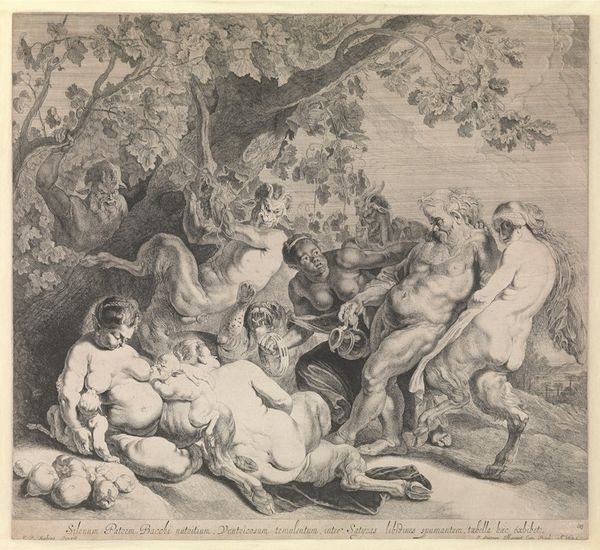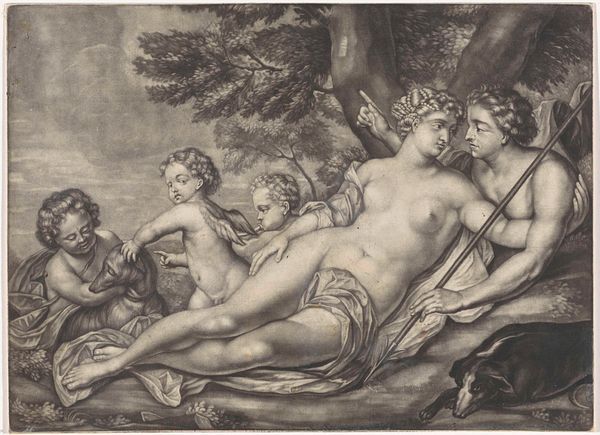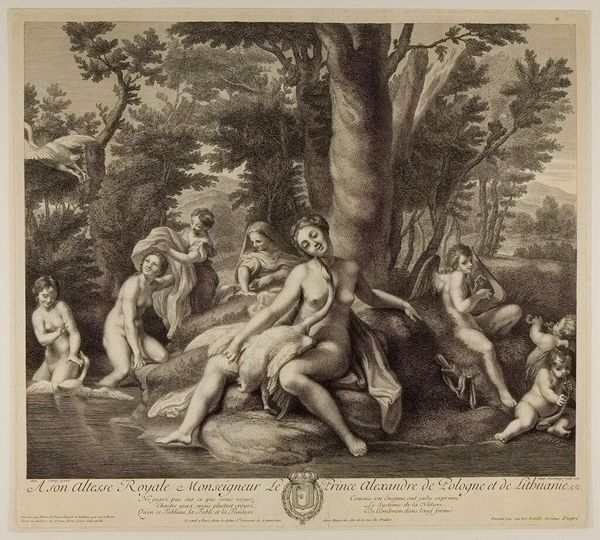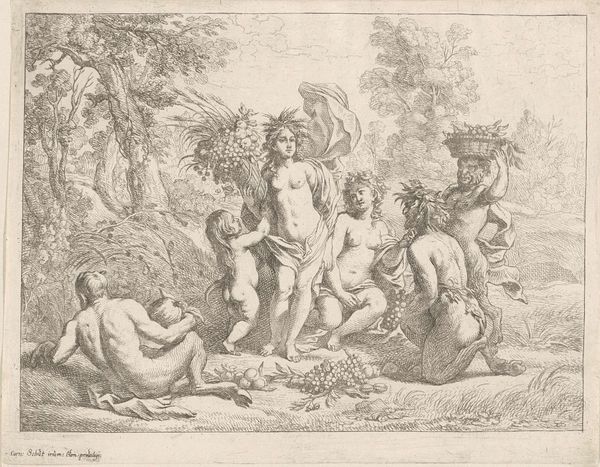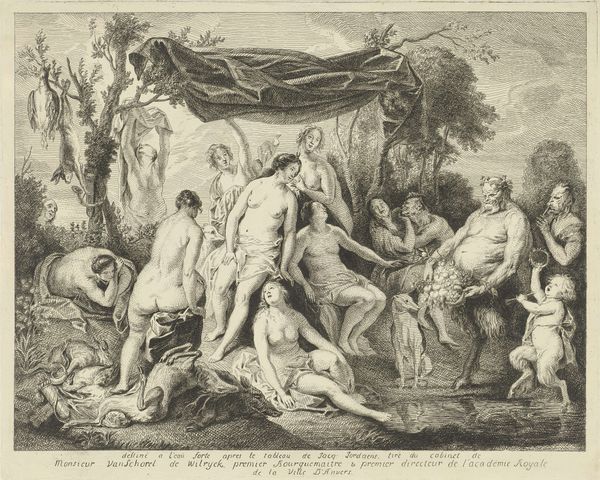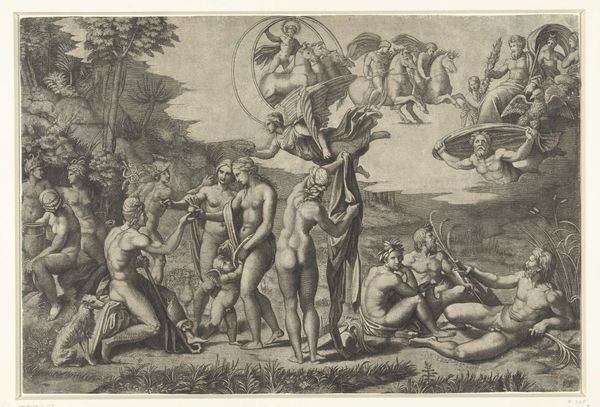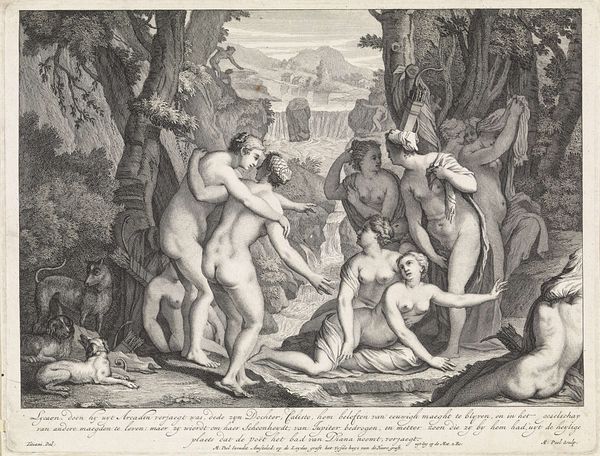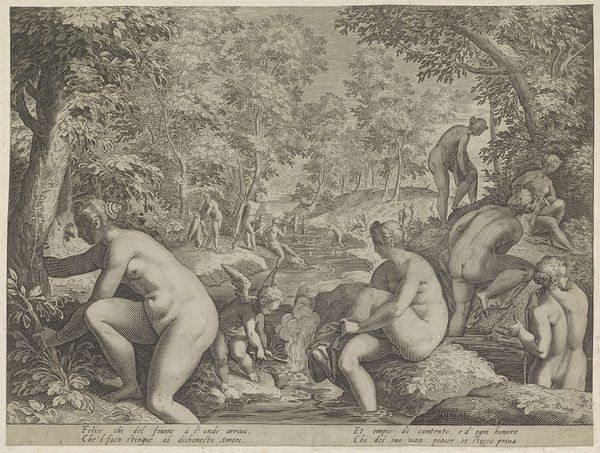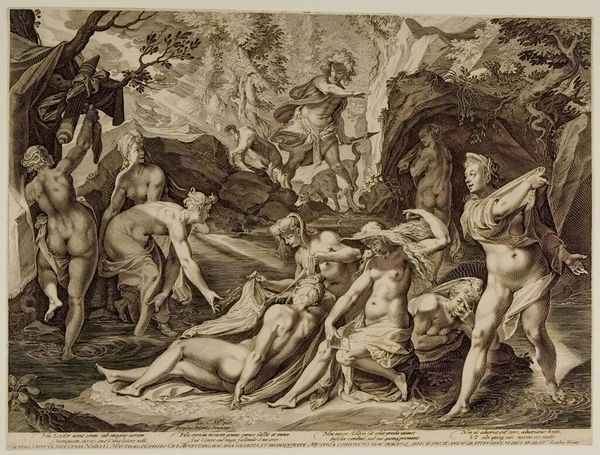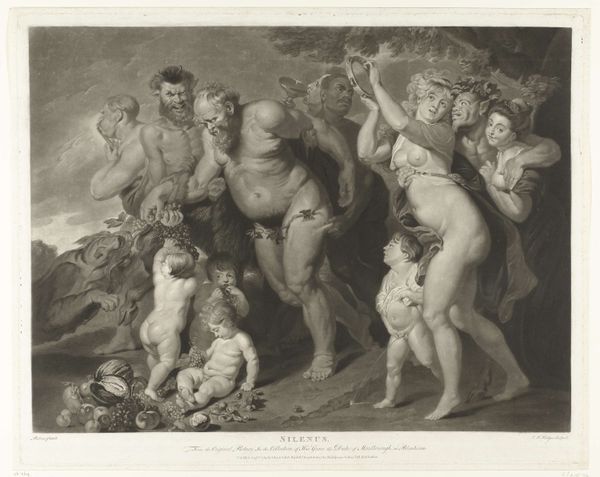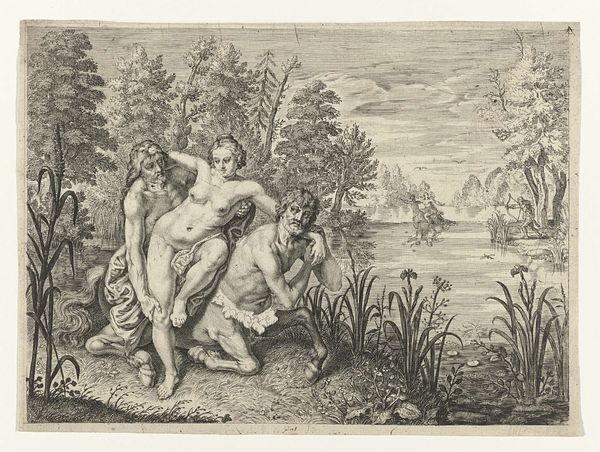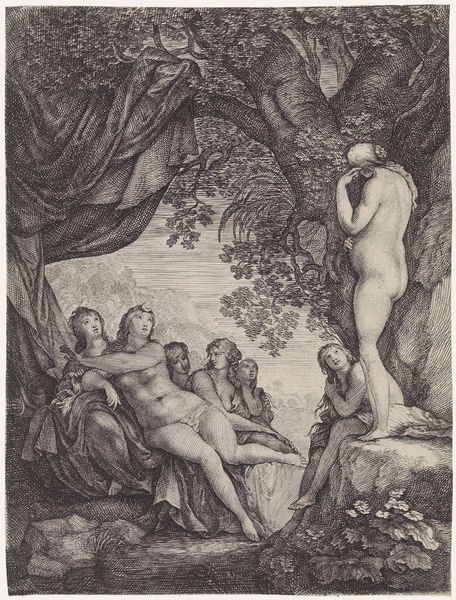
drawing, pencil, charcoal
#
drawing
#
baroque
#
pencil sketch
#
landscape
#
charcoal drawing
#
figuration
#
pencil drawing
#
pencil
#
genre-painting
#
charcoal
#
history-painting
#
academic-art
#
charcoal
#
nude
Dimensions: height 269 mm, width 359 mm
Copyright: Rijks Museum: Open Domain
Editor: So, this is "Diana and Callisto," a drawing done in pencil and charcoal by Jan Verkolje I, sometime between 1660 and 1693. It has such a dramatic, almost theatrical feel to it, even though it's "just" a drawing. What’s your take on it? Curator: This drawing exemplifies how power dynamics were encoded in visual culture. Diana, goddess of the hunt and chastity, embodies authority within this all-female space. Consider the historical context: baroque art served the aristocracy. So, the gaze, the act of witnessing Callisto’s exposed pregnancy, are fraught with political weight. Who holds the power here, and how is that visually communicated? Editor: So, it’s not just a pretty scene? Curator: Absolutely not. Look at the arrangement. It resembles a stage. Baroque art frequently utilized dramatic compositions to convey narratives, often didactic ones. Think about who would be viewing this image. Likely, members of the upper class, instructed on the consequences of disobedience, perhaps even critiquing acceptable forms of sexuality. Editor: So, it’s almost a morality play? Curator: In a way, yes. How do you think the institutional support of art like this shaped social views at the time? Did this piece reaffirm established power structures? Did it ever pose a challenge? It’s fascinating to consider the dialogue between art and audience. Editor: It’s so interesting how what seems like a simple drawing has so much to unpack, so many societal messages embedded in it. Curator: Exactly. It reminds us to look beyond aesthetics and consider art as a product of, and a contributor to, broader cultural conversations. I have definitely gained a deeper insight into understanding such works and finding what historical, sociological or political angles can contribute to my overall viewing and evaluation of it. Editor: I agree; this conversation has shown me that a work of art speaks volumes, not only about the past but the cultural history of its viewer as well!
Comments
No comments
Be the first to comment and join the conversation on the ultimate creative platform.
